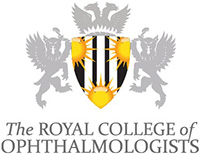Objective Assessment of Surgical and Technical Skills (OSATS)
Competence in 13 of the surgical skills Learning Outcomes in the OST curriculum is assessed using a specific rating scale for each one based upon a modification of the published OSATS used in general surgery.
How a surgical procedure is taught will be determined by the individual trainer and informed by an appropriate training the trainers course. When trainees have the opportunity to perform the procedure themselves they must do so under appropriate supervision. The supervisor will be able to complete an OSATS at the end of the procedure. If there are aspects of the procedure that are not performed satisfactorily the completed OSATS will act as a guide for training and inform the next attempt. Where possible a trainee will arrange to have at least 2 satisfactory OSATS for each of the SS Learning Outcomes. Where opportunities to perform a procedure are scarce e.g. SS9 ‘Canthus’, it may be appropriate for the portfolio to contain only one OSATS. The ultimate decision as to how many are appropriate will be the responsibility of the ARCP panel.
Several Learning Outcomes are expected to be reassessed on an annual basis after the TYA i.e. SS1 basic (micro) surgical skills, SS4 cataract and SS7 lid surgery.
It is expected that several OSATS will be completed and kept in the trainee’s portfolio, before the first satisfactory OSATS is achieved for an individual Learning Outcome. It is important that a trainee and trainer understand that this is an important part of training and does not represent a problem with a trainee.
Trainees should also maintain a logbook of surgical and laser procedures performed with reflective comments where appropriate as part of their portfolio.
Where appropriate it is useful for initial OSATS to be completed using any simulators that are available e.g. in a wet lab. The OSATS form must make it clear that the assessment has been carried out using a simulator.
The following surgical Learning Outcomes are assessed by OSATS:
| OSATS | Learning Outcome (LO) | Target Year (TYA)* | Comments | |
| OSATS2 | SS2 | Operating microscope | 1 | |
| OSATS3 | SS3 | Aseptic technique | 1 | This LO can be assessed by an appropriately trained theatre nurse |
| OSATS1 | SS1 | Microsurgical skills | 2 (annual review) | OSATS after initial TYA should reflect an increase in complexity of cases |
| OSATS1 | SS7 | Lid surgery | 2 (plus 6 assessments during OST4-7) | |
| OSATS1 | SS4 | Cataract surgery | 3 (annual review) | |
| OSATS1 | SS11 | Temporal artery biopsy | 7 | |
| OSATS1 | SS5 | Procedures to lower IOP | 7 | |
| OSATS1 | SS6 | Ocular and adnexal trauma | 7 | |
| OSATS1 | SS8 | Ocular surface protection | 7 | |
| OSATS1 | SS9 | Lateral canthotomy/cantholysis | 7 | |
| OSATS1 | SS10 | Biopsy ocular and adnexal tissue | 7 | |
| OSATS1 | SS12 | Extraocular muscle surgery | 7 | |
| OSATS1 | SS13 | Removal of the eye | 7 | |
* The TYA represents the latest year that a trainee must achieve the specified LO. Trainees are encouraged to seek assessment using OSATS when an opportunity arises and not wait until the target year.
By completion of training a trainee’s portfolio may contain around 70 satisfactory OSATS forms.
